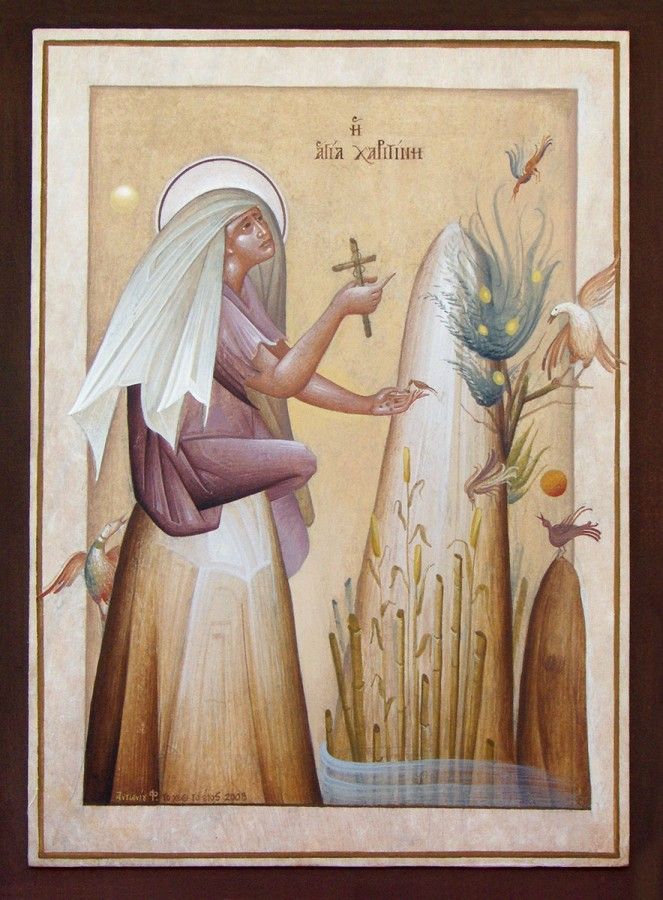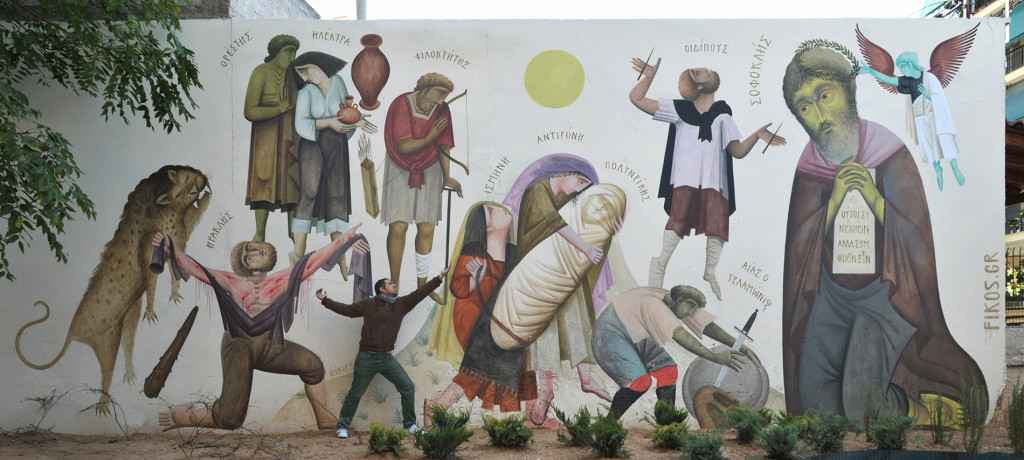
This wonderful article in the Orthodox Arts Journal, “Contemporary Byzantine Painting: Street Art and the Icon in Convergence,” introduces the reader to the Greek artist, Fikos. Fikos started painting as a child— comic book strips, landscapes and, yes, icons. At age 13 he was studied under the renowned contemporary iconographer George Kordis. His work is beautiful, but it’s his approach to art—both street art and liturgical art—that drew my interest.

Street art and liturgical art have something in common? But isn’t graffiti historically a youthful act of rebellion? And what does the graffiti writer and the icon writer possibly have in common? In this interview with Fr. Silouan Justiniano, we learn more about this:
Can graffiti possibly bring us to remembrance of our common humanity, meant to aspire towards a higher life of blessedness? Perhaps… If so even graffiti, or at least some of its more positive strains as found in recent Neo-muralism, can be seen as an attempt to imaginatively transform our bleak post-industrial environments ̶ to offer an alternative vision ̶ by infusing them with images suggestive of a far richer, living and higher reality, imbued with beauty, lyricism, joy, rhythm and hope. So similarities with the icon in fact begin to arise…
That’s what Mare tries to do, in my novel, Cherry Bomb. Along with the street artists she meets in Atlanta, who are protesting poverty and corrupt landlords and the ugliness of the lifeless buildings in the 1980s, Mare throws up images of the darkness she has lived through in her young life. And when she discovers icons and eventually visits churches and monasteries, she embraces the liturgical art of iconography in a way that both surprises and saves her.
Fikos’ work is beautiful—both his icons and his street art. The article is definitely worth a read if you are interested in either of these art forms.
Have a great weekend!